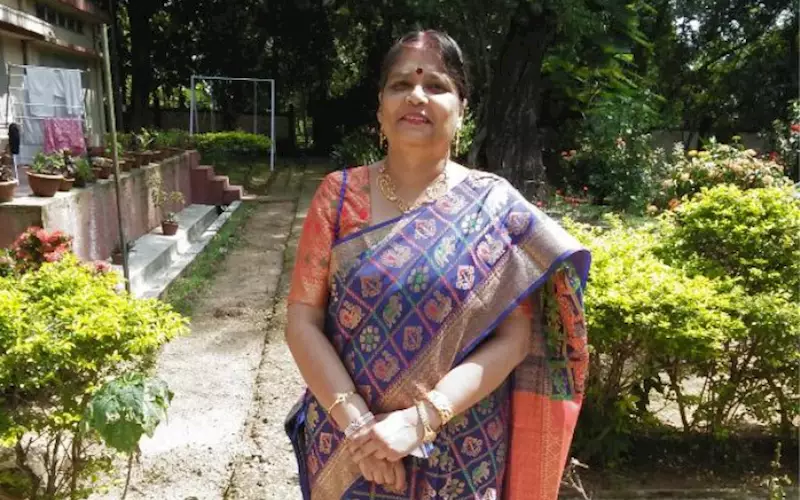Swati Bandyopadhyay: More industry-academia collaborations needed
Long-term internships with successive placement offers may be explored to provide hands-on training to young engineers, says Dr Swati Bandyopadhyay, associate professor, Printing Engineering Department, Jadavpur University, Kolkata in the Print Guru series
17 Jan 2024 | By PrintWeek Team
What is the USP of the print and packaging industry in India?
I think colour and security features are the USP of the print and packaging industry in India.
As an educator, what have been the three biggest problems you have faced?
The first challenge is that printing engineering resources are expensive. So, it is difficult to offer hands-on or practical training of the current technology to the students which they are eager to learn. We try to overcome it by industry visits. The students can visualise the operation of equipment there. But normally they do not run experiments there. The second challenge is that in West Bengal, Jadavpur University offers degree courses in Printing Engineering and the Regional Institute of Printing Technology (RIPT), which is older, offers diploma courses. However, the industry does not have precise and specific jobs for diploma and degree students. Meanwhile, jobs in newspaper printing houses are slowly compressing. The syllabi of Printing Engineering are so formulated that starting from network to process control everything related to the press is covered. However, printing engineers are underutilised in some sections of large newspaper houses.
How do you think these obstacles could be tackled creatively?
The industry-academia interrelation should be increased to a great extent. Long-term internships with successive placement offers may be explored to provide hands-on training to young engineers. Specific job descriptions by industries for diploma and degree engineers are the need of the hour. Academic institutes should upgrade the syllabus and teaching methodology accordingly.
It has to be noted that the job market of newspaper houses is reducing. However, it may be noted that the literacy rate is continuously increasing. Hence it seems that vernacular newspaper production increases to a great extent. More books, periodicals and newspapers in vernacular languages for new learners may increase new job prospects for printing engineers. Since the competition is very tough with digital media, colour quality control will have immense importance. Security features should be of special concern to avoid counterfeiting. The scope of the packaging industry is expanding to a great extent. Print quality is one of the major attributes of the packaging industry. Security features and quality control of package prints are the areas where printing and packaging engineers can dominate.
Which is your favourite subject and why is it important?
My favourite subject is colour and imaging science. Now, print media is facing uneven competition with 64-bit digital media. The colour and image quality of print media are the main sources of attraction for young learners who are used to mobile phones and television. Therefore, colour and image quality control the market of print media. In the case of packaging, the problem is more critical, where the product is sold by package quality, more specifically its colour and image quality. Thus, I think it is the most promising area of printing technology. Careful colour management is the key to success in this area.
Today, you are a teacher. Who was your guru, and why so?
I am a chemical engineer who shifted her career to printing engineering. Thus, I do not have any specific gurus. However, Prof VS Krishnamurty of Institute of Printing Technology, Prof Lalitha Jayaraman of Anna University inspired me to a great extent. Prof PB Kulkarni and PB Likhite of PVG College have significantly contributed to my life. At the beginning of my career, I got support from Prof Ashok Mukhopadhyay, JU and Mr PK Mukhopadhyay of ABP. A Lahiri, Ex-CMD of ABP helped our institute to a great extent. I learnt a lot from Prof Phil Green of London College of Communication and Prof Alain Tremeau of University of St Etienne, France.
Were you the minister of printing and packaging, how would you tackle the industry's problems creatively?
Currently, the government is increasing book production in regional languages as per National Education Policy (NEP 2020), which I appreciate. I shall emphasise more colour works in book for young learners. For new adult learners too, books should be more attractive with more colour and bigger font. Emphasis should be given on attractive cover page design. Literature, features, and popular stories with coloured pictures on inside pages may attract young learners more. I would also like to emphasise recycled eco-friendly substrates.
What ingredient do you seek among your young disciples?
I expect sincerity, integrity, passionate professionalism, dynamism and continuous upgradation of knowledge from my young disciples.
An article/listing in which publication that impressed you?
Nussbaum, Peter; Kresović, Milan; Green, Philip John (2022). Non-standard colorimetry in ICC colour management. IS&T International Symposium on Electronic Imaging Science and Technology.
One project which you are excited about?
I have recently completed Project Packmark, which is an Indo-French Collaboration of academics and industry on security features of medicine packaging (blister pack) based on colour and dot shape features. The project is funded by Indo-French Centre for the Promotion of Advanced Research (IFCPAR/CEFIPRA)
Assuming you can align with a print or packaging association, what would be the three most important things you would expect from it?
I would like to see that the association tries to contribute and support the students in the area of printing and packaging. I am interested if the association thinks about innovative ways to make books and other publications more attractive for young learners. I shall expect efforts of the association to fight with counterfeiting of printed products.
The industry needs skilled professionals on the shopfloor, and different printing education institutes have been churning out printing professionals for decades now. Still, there seems to be a disconnect between industry and academia. Why? What do print teachers want from the industry? Read more in this series where PrintWeek asks 13 print gurus.











 See All
See All